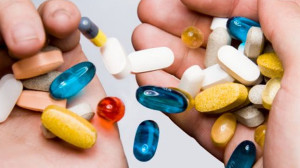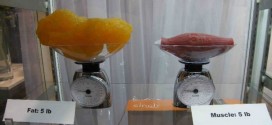At some point along the line, buying a multivitamin became akin to choosing a breakfast cereal or a new lipstick – that is, there’s way too much choice out there. Gummy vitamins, soluble vitamins, vitamins for kids, teens, menopausal women, 50+ … the list goes on. And then some. And one of the big differences is, of course, the array of vitamins that are marketed at men and those geared towards women. Is a ‘neutral’ multivitamin enough anymore, or are there genuine benefits to taking a multivit that’s been designed for those of us in the world with two X chromosomes?
 For the sake of comparison, I’ll be inspecting Vitabiotics Wellwoman Sport & Fitness tablets with Vitabiotics Wellman Sport tablets. Both products guarantee levels of vitamins that surpass the Recommended Daily Allowance – as is necessary for the performance athletes that they are targeted at – but there is a few key differences between the two that I will explore a little further in this article. Athletes – along with pregnant women, post-menopausal women, and vegetarians – are counted among people in society who should be taking a daily multivitamin, due to their increased need for certain nutrients and amino acids.
For the sake of comparison, I’ll be inspecting Vitabiotics Wellwoman Sport & Fitness tablets with Vitabiotics Wellman Sport tablets. Both products guarantee levels of vitamins that surpass the Recommended Daily Allowance – as is necessary for the performance athletes that they are targeted at – but there is a few key differences between the two that I will explore a little further in this article. Athletes – along with pregnant women, post-menopausal women, and vegetarians – are counted among people in society who should be taking a daily multivitamin, due to their increased need for certain nutrients and amino acids.
Essentially, men and women have different dietary requirements and there are certain attributes of some vitamins and other supplements that have negative effects for one gender – for example, risks carried for pregnant women – where they may be crucial to the other. Many things stay the same in both multivitamins, though. Levels of most vitamins were either the same or very similar in dosage, including B vitamins, vitamin C, and minerals such as copper and zinc (some tend to be slightly higher for men, due to the likelihood of their increased size as athletes).
But what are the differences? And do they matter?
When reviewing the difference between the two supplements I used as an example, I noticed that the women’s multivitamin:
Lacks Vitamin A.
According to some research, taking ’too much’ (i.e. more than an average of 1.5mg a day) of vitamin A over many years may affect the bones, making them more likely to fracture as the body ages. This is particularly important for women, who are already at risk of osteoporosis. It is also advised that pregnant women do not take vitamin A; vitamin A is a ‘teratogen’, which damages the development of cells in foetuses, leading to the developments of conditions like spina bifida, hydrocephalus and urinary tract malformations. Furthermore, the damage is usually done in the first few days or weeks of a pregnancy. Therefore many women’s multivitamins have taken vitamin A out of their supplements due to the risk factor involved.
Includes Vitamin K.
Vitamin K promotes blood clotting and is used to treat patients who are given too much of a ‘blood thinning’ medication. It is not proven that this – Vitamin K’s most significant effect on the body – is more useful to women than men. However, Coenzyme Q-10 – which is found in the men’s supplement I looked at – is chemically similar to vitamin K and, like vitamin K, can promote blood clotting. Although Coenzyme Q-10 and Vitamin K are not in any way ‘the same’, their main benefits are similar enough that it would be unnecessary, and potentially risky, to take the two together. Also, the current research on their individual effects for men and women prove that there may be some benefit either way:
- There is increasing evidence that vitamin K improves bone health and reduces risk of bone fractures – particularly in postmenopausal women who are at risk of osteoporosis.
- There are also small amounts of evidence that Q-10 has an effect on male fertility, by increasing the movement and density of sperm.
So a lack of Coenzyme Q-10 and the presence of Vitamin K isn’t arbitrary; your multivitamin is likely to reflect the current (and on-going) research into these gender-specific theories.
Contains more iron.
The risk of iron deficiency in women of childbearing age is considerable because of the additional iron demands of menstruation and pregnancy. Therefore, it is very common to find more iron in a women’s multivitamin than in a product aimed at men. In addition, the woman’s formula is more likely to contain high levels of riboflavin (vit. B2), vitamin B6 and vitamin C which also contribute to the maintenance of normal red blood cell formation and normal oxygen transport in the blood.
Contains more manganese and selenium.
Manganese and selenium are both proven to be useful for osteoporosis, which women become more susceptible to with old age (affecting one in three women as opposed to one in five men during their lifespan). Manganese also has positive effects on anaemia and symptoms of premenstrual syndrome (PMS), so it is clearly of greater general use to the female body.
Includes green tea and guarana extract.
Both green tea and guarana extracts are thought to boost fat loss. Both act as stimulants which, it has been suggested, increase the metabolic rate, suppress appetite and enhance both physical and mental performance. Women need a bit more of boost with fat loss than men do: men have much more active metabolic mass on their bodies – more skeletal muscle, bigger hearts, bigger kidneys, and less body fat proportionately for their total body weight. Fat only burns a couple of calories per pound, whereas muscle requires three times this amount. The heart and kidneys also require a huge amount of calories to fuel them throughout the day. Therefore, the man’s body is ‘programmed’ to have a higher resting metabolic rate – so it’s likely that a multivitamin aimed at women will contain ingredients that are believed to affect fat loss.
Includes L-Methionine and N-Acetyl Cysteine.
Some studies suggest that these amino acids have positive effects on conditions such as schizophrenia and bipolar disorder, thus suggesting that they could therefore have positive effects on improving mood of women who suffer from pre-menstrual syndrome. In addition, N-Acetyl Cysteine appears to have comparable effects on menstrual irregularity in women, according to a study at Erciyes University, and L-Methionine may protect against vascular disease in the reproductive years for women.
Lacks L-Tyrosine, L-Arginine and L-Lysine.
The body is usually effective enough at producing these amino acids, but there are some studies that suggest they may have added benefit to men in a variety of ways. L-Lysine is claimed to increase testosterone levels in men, although as yet there is little evidence to verify this. L-Tyrosine and L-Arginine both appear to have positive effects on male virility: L-Tyrosine appears to boost interest in sex, and L-Arginine is often used in research for increasing endothelial Nitric Oxide, which is the prime chemical involved in erections.
–
This isn’t to say that your performance as an athlete would suffer because you chose not to take a multivitamin designed specifically for women, but as you can see, there are definite benefits to taking the extra nutrients that are important for women to consider. If you’re concerned about the lack of certain vitamins (such as vitamin A), remember that all these vitamins and minerals will be present in a good, well-rounded diet – so you won’t be malnourished because the manufacturers take the precautions to ‘protect’ women who may find themselves in circumstances where these nutrients could have adverse effects.
Supplement Judge’s advice? For women, it’s probably in your best interest to find a multivitamin that is tailored towards your gender. If you’re training hard you’ll need to be in optimum physical condition, so taking a multivitamin is an easy way to be absolutely sure you’re getting everything you need.
–
References
N.a. “Men’s Vs Women’s Vitamins – Why be Gender Specific?” The Free Library. Web. <http://www.thefreelibrary.com/Men’s+Vs+Women’s+Vitamins+Why+Be+Gender+Specific-a01073752012>
“Coenzyme Q-10”. Medline Plus. US National Library of Medicine. 21 Oct 2011. Web.
“Vitamin K”. University of Maryland Medical Center. 23 Oct 2011. Web.
Harvey, Linda et al. “Impact of menstrual blood loss and diet on iron deficiency among women in the UK”. British Journal of Nutrition. 94 (2005). 557–564. Print.
Rayman, M P. “Selenium and human health”. Lancet. 2012: 379. 1256-68. Print.
WHO Study Group on Assessment of Fracture Risk, and its Application to Screening for Postmenopausal Osteoporosis. “Assessment of fracture risk and its application to screening for postmenopausal osteoporosis”. World Health Organization. 1994. Print.
Neer, Robert M., et al. “Effect of parathyroid hormone (1-34) on fractures and bone mineral density in postmenopausal women with osteoporosis.” New England Journal of Medicine 344.19 (2001): 1434-1441.
Oner, G, et al. “Clinical, endocrine and metabolic effects of metformin vs N-acetyl-cysteine in women with polycystic ovary syndrome”. Eur J Obstet Gynecol Reprod Biol. Nov 2011; 159. Print. < http://www.ncbi.nlm.nih.gov/pubmed/21831508>
Boers, GH, et al. “Unique efficiency of methionine metabolism in premenopausal women may protect against vascular disease in the reproductive years”. J Clin Invest. 1983 Dec; 72(6). 1971-6. Print.
Schmerling, Robert. “His and Her Vitamins — Smart Medicine or Marketing Ploy?” Medical Myths. Inteliheath.com. 8 Oct 2010. Web..
 Supplement Judge Unbiased Supplement Reviews – Do they really work??
Supplement Judge Unbiased Supplement Reviews – Do they really work??




